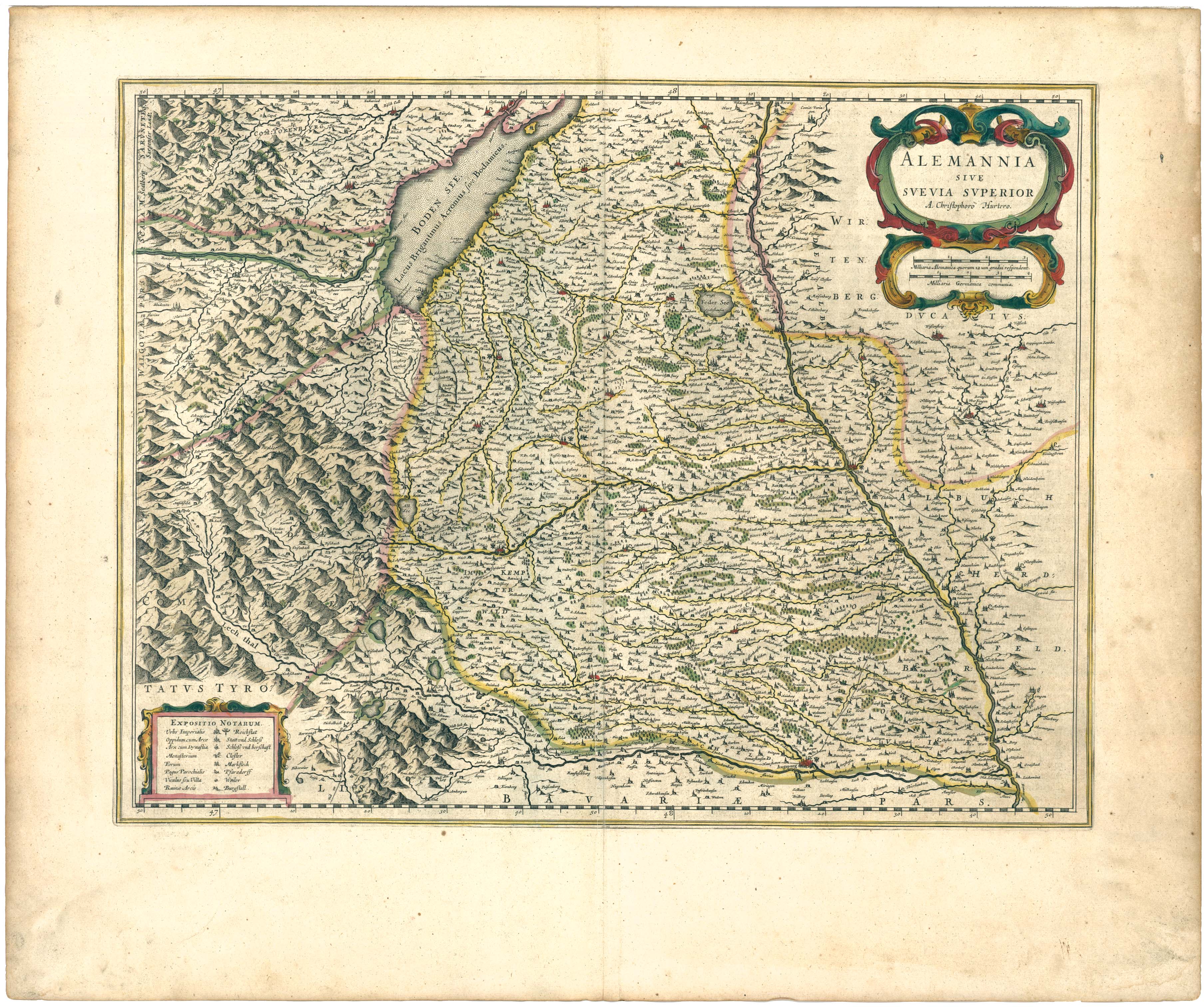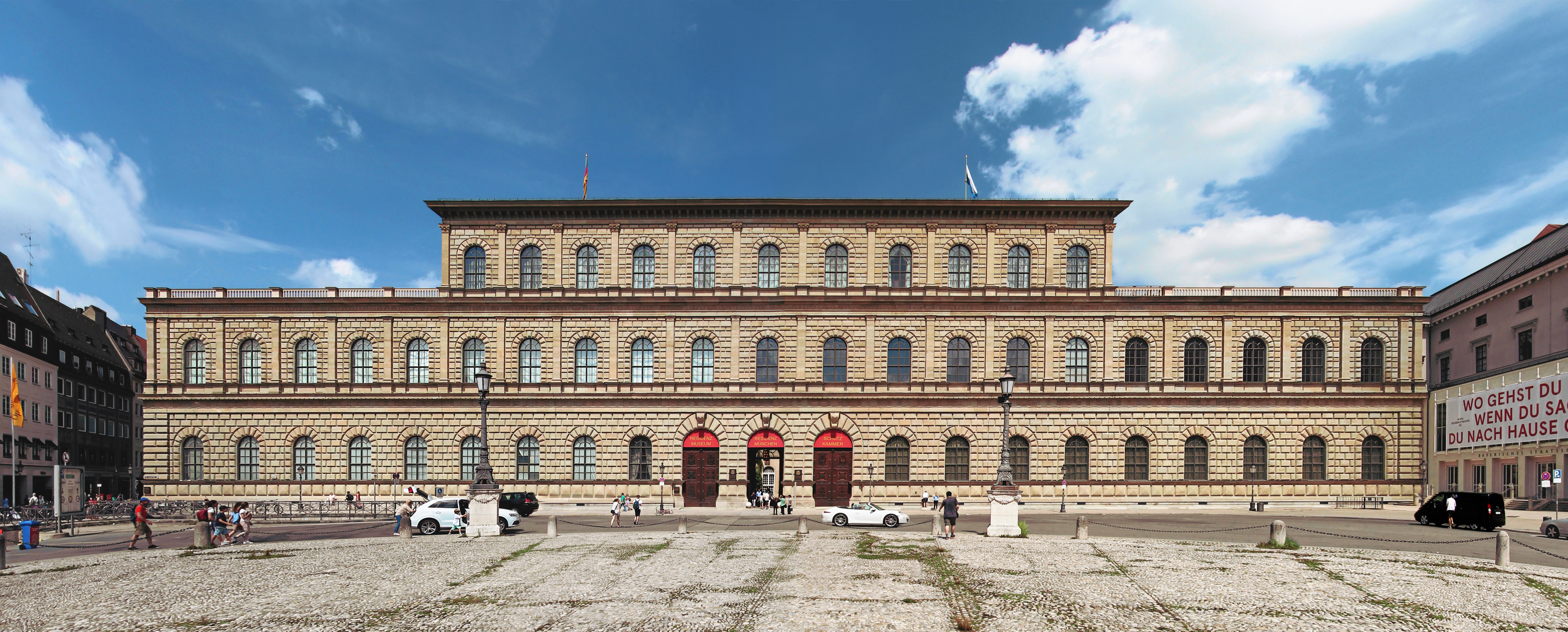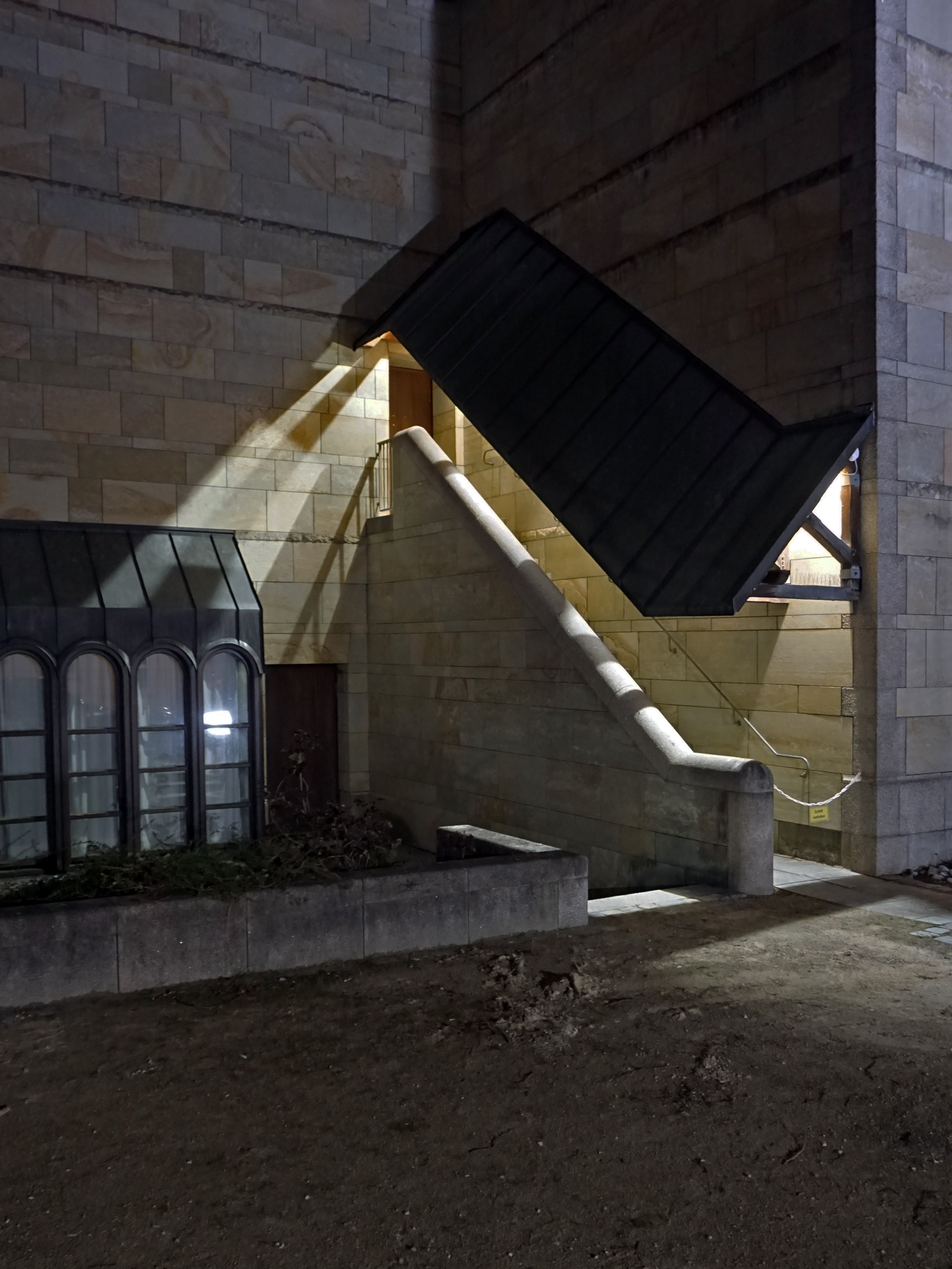|
Maria Caspar-Filser
Maria Caspar-Filser (7 August 1878 - 12 February 1968) was a German painter. She lived and worked mainly in Munich. Life and work Maria Filser grew up in rural southwestern Germany. She studied at the State Academy of Fine Arts Stuttgart and the Academy of Fine Arts in Munich. She married the painter Karl Caspar, who had been a childhood friend and neighbour, in 1907 and took the name Caspar-Filser. In 1909 she became a member of the ''Deutscher Künstlerbund (German Association of Artists)''. In 1913, she was the only woman among the founding members of the artists' association '' Münchener Neue Secession''. In 1925 she became the first German woman painter to be awarded the title of professor. She taught at the Academy of Fine Arts in Munich. In 1928 she took part in the Venice Biennale. Caspar-Filser primarily painted flowers, gardens and landscapes, influenced equally by Impressionism and Expressionism. The Nazis considered Caspar-Filser's paintings "degenerate" and beg ... [...More Info...] [...Related Items...] OR: [Wikipedia] [Google] [Baidu] |
Riedlingen
Riedlingen () is a town in the district (''Kreis'') of Biberach, Baden-Württemberg, in the south-west of Germany. It is one of the destinations of the Upper Swabian Baroque Route. Riedlingen has approximately 10,000 inhabitants. Geography The town is situated on the river Danube. Furthermore, there it lies in a dale which is created by the extensions of the Swabian Alps. Around Riedlingen there are seven villages which are part of the urban district. These are called Neufra, Daugendorf, Grüningen, Pflummern, Zwiefaltendorf, Zell and Bechingen. History Riedlingen is probably an Alemannic foundation. The first written reference dates back to 835. The medieval city was built 1247–1255, situated east of the hamlet of the Earl of Veringen. It was a typical town with its foundations kept in rectangular and square roads with the market place as the centre. Even in the late 13th Century the city was in possession of the Habsburgs, but which they pledged later. In 1314 th ... [...More Info...] [...Related Items...] OR: [Wikipedia] [Google] [Baidu] |
State Academy Of Fine Arts Stuttgart
The State Academy of Fine Arts Stuttgart (German: Staatliche Akademie der Bildenden Künste Stuttgart) is a university in Stuttgart, Germany. Founded on 25 June 1761, and located since 1946 on the Weißenhof, the Academy, whose historical significance marks names such as Nicolas Guibal, Johann Heinrich von Dannecker, Bernhard Pankok, Adolf Hölzel, Willi Baumeister, Herbert Hirche, K.R.H. Sonderborg, Alfred Hrdlicka, Heinz Edelmann, Marianne Eigenheer, Richard Sapper, Joseph Kosuth, David Chipperfield, Joan Jonas, Micha Ullman, offers from all art universities in the federal state Baden-Württemberg the largest numbers of courses, namely all disciplines of the visual field, and not just in an organizational network but also under one roof. This is essentially the result of the connection of the former Academy of Fine Arts (''Württembergische Akademie der bildenden Künste'') with the former School of Applied Arts (''Württembergische Staatliche Kunstgewerbeschule'') in 194 ... [...More Info...] [...Related Items...] OR: [Wikipedia] [Google] [Baidu] |
Rosenheim
Rosenheim is a city in Bavaria, Germany. It is an independent city located in the centre of the district of Rosenheim (Upper Bavaria), and is also the seat of its administration. It is located on the west bank of the Inn at the confluence of the rivers Inn and Mangfall, in the Bavarian Alpine Foreland. It is the third largest city in Upper Bavaria with over 63,000 inhabitants. Rosenheim is the economic centre and the busiest place in the region. Geography The population of the actual city is approximately 60,000 inhabitants with up to 125,000 in the surrounding area. Rosenheim is situated in the Upper-Bavarian Alpine Foothills, above sea level and covers an area of . The capital of Bavaria, Munich, is North-West of Rosenheim. Rosenheim station is at the junction of the Munich–Rosenheim, the Rosenheim–Salzburg and the Munich–Innsbruck lines. The landscape around Rosenheim was formed during the last ice age from the advancement of the Inn Valley Glacier and later the Ro ... [...More Info...] [...Related Items...] OR: [Wikipedia] [Google] [Baidu] |
Musée National D'Art Moderne
The Musée National d'Art Moderne (; "National Museum of Modern Art") is the national museum for modern art of France. It is located in Paris and is housed in the Centre Pompidou in the 4th arrondissement of the city. In 2021 it ranked 10th in the List of most visited art museums in the world, with 1,501,040 visitors. It is one of the largest museums for modern and contemporary art. In 1937, the Musée National d'Art Moderne succeeded the Musée du Luxembourg, established in 1818 by King Louis XVIII as the first museum of contemporary art created in Europe, devoted to living artists whose work was due to join the Louvre 10 years after their death. Imagined as early as 1929 by Auguste Perret to replace the old Palais du Trocadero, the construction of a museum of modern art was officially decided in 1934 in the western wing of the Palais de Tokyo. Completed in 1937 for that year's International Exhibition of Arts and Technology, it was temporarily used for another purpose, si ... [...More Info...] [...Related Items...] OR: [Wikipedia] [Google] [Baidu] |
Medal Of The City Of Paris
The Medal of the City of Paris (french: Médaille de la Ville de Paris) is a distinction created in 1911 and awarded by the mayor of Paris on the proposal of elected members of the Paris Council or associations. There are several levels: bronze, silver, large silver and vermeil. It rewards people who have achieved a "remarkable act concerning the capital" but is also awarded systematically to centenary Parisians and couples celebrating their golden wedding (50 years), diamond (60 years), platinum (70 years), alabaster (75) or oak (80). List of recipients * Michael Jackson (Grand Vermeil Medal 1988) * Maurice Allais (Grand Vermeil Medal 1989) * Josy Eisenberg (Grand Vermeil Medal 1993) * Brigitte Bardot (Grand Vermeil Medal 1994) * Hayao Miyazaki (Grand Vermeil Medal 2001) * Kihachirō Kawamoto (Grand Vermeil Medal 2003) * Toni Morrison (Grand Vermeil Medal 2004) * Jackie Chan (Grand Vermeil Medal 2005) * Diana Ross (Grand Vermeil Medal 2005) * Jerry Lewis (Grand Vermeil Medal 2006 ... [...More Info...] [...Related Items...] OR: [Wikipedia] [Google] [Baidu] |
Upper Swabia
Upper Swabia (german: Oberschwaben or ) is a region in Germany in the federal states of Baden-Württemberg and Bavaria.''Brockhaus Enzyklopädie.'' 19. Auflage. Band 16, 1991, p. 72. The name refers to the area between the Swabian Jura, Lake Constance and the Lech. Its counterpart is Lower Swabia (''Niederschwaben''), the region around Heilbronn. Geography The region of Upper Swabia is situated in the central south of Germany consisting of the south-east of Baden-Württemberg and the south-west bavarian Swabia region and lies on the Iller-Lech Plateau, also known as the Upper Swabian Plain, one of the natural regions of Germany. The landscape of Upper Swabia was formed by retreating glaciers after the Riss glaciation, leaving behind a large number of shallows which quickly filled up with water. This led to the large quantity of lakes in Upper Swabia. The landscape of Upper Swabia is quite hilly rising from approximately 458 metres above sea level in the vall ... [...More Info...] [...Related Items...] OR: [Wikipedia] [Google] [Baidu] |
Bayerische Akademie Der Schönen Künste
Bayerische Akademie der Schönen Künste in München (Bavarian Academy of Fine Arts) is an association of renowned personalities in Munich, Bavaria. It was founded by the Free State of Bavaria in 1948, continuing a tradition established in 1808 by the Royal Academy of Arts in Munich. The academy organizes panel discussions, exhibitions, readings, lectures and concerts. Until 1968, the academy had its headquarters at Prinz-Carl-Palais, after which they received a temporary quarters at the Caroline court. Since 1972 it has had its headquarters in the Königsbau (King's tract) of the Munich Residenz. Prizes The academy has awarded several prizes, some called Ehrung (honour), Ehrenring (ring of honour), Ehrengabe (gift of honour): *Großer Literaturpreis der Bayerischen Akademie der Schönen Künste **1950–85 ''Literaturpreis'' (literature prize) **1986–2007 ''Großer Literaturpreis'' (great literature prize) **since 2008 ''Thomas Mann-Preis'' (Thomas Mann Prize) *Literarische ... [...More Info...] [...Related Items...] OR: [Wikipedia] [Google] [Baidu] |
Prize In Visual Arts Of The City Of Munich
A prize is an award to be given to a person or a group of people (such as sporting teams and organizations) to recognize and reward their actions and achievements.Prize definition 1, The Free Dictionary, Farlex, Inc. Retrieved August 7, 2009. Official prizes often involve monetary rewards as well as the fame that comes with them. Some prizes are also associated with extravagant awarding ceremonies, such as the s. Prizes are also given to publicize noteworthy or exemplary behaviour, and to provide incentives for improved outcomes and competitive efforts. In general, prizes are regarded in a positive light, and their winners are ... [...More Info...] [...Related Items...] OR: [Wikipedia] [Google] [Baidu] |
Neue Pinakothek
The Neue Pinakothek (, ''New Pinacotheca'') is an art museum in Munich, Germany. Its focus is European Art of the 18th and 19th centuries, and it is one of the most important museums of art of the nineteenth century in the world. Together with the Alte Pinakothek and the Pinakothek der Moderne, it is part of Munich's "Kunstareal" (the "art area"). The building The museum was founded by King Ludwig I of Bavaria in 1853. The original building constructed by Friedrich von Gärtner and August von Voit was destroyed during World War II. The ruin of the Neue Pinakothek was demolished in 1949. The building was replaced in the late 20th century. Designed by architect , the new postmodern building opened in 1981. Its features include arched windows, keystones, bay windows and stairways. It combines a concrete construction with a stone facade design. History Ludwig began to collect contemporary art already as crown prince in 1809 and his collection was steadily enlarged. When the mus ... [...More Info...] [...Related Items...] OR: [Wikipedia] [Google] [Baidu] |
Nazi
Nazism ( ; german: Nazismus), the common name in English for National Socialism (german: Nationalsozialismus, ), is the far-right totalitarian political ideology and practices associated with Adolf Hitler and the Nazi Party (NSDAP) in Nazi Germany. During Hitler's rise to power in 1930s Europe, it was frequently referred to as Hitlerism (german: Hitlerfaschismus). The later related term " neo-Nazism" is applied to other far-right groups with similar ideas which formed after the Second World War. Nazism is a form of fascism, with disdain for liberal democracy and the parliamentary system. It incorporates a dictatorship, fervent antisemitism, anti-communism, scientific racism, and the use of eugenics into its creed. Its extreme nationalism originated in pan-Germanism and the ethno-nationalist '' Völkisch'' movement which had been a prominent aspect of German nationalism since the late 19th century, and it was strongly influenced by the paramilitary groups that ... [...More Info...] [...Related Items...] OR: [Wikipedia] [Google] [Baidu] |
Venice Biennale
The Venice Biennale (; it, La Biennale di Venezia) is an international cultural exhibition hosted annually in Venice, Italy by the Biennale Foundation. The biennale has been organised every year since 1895, which makes it the oldest of its kind. The main exhibition held in Castello, in the halls of the Arsenale and Biennale Gardens, alternates between art and architecture (hence the name ''biennale''; ''biennial''). The other events hosted by the Foundationspanning theatre, music, and danceare held annually in various parts of Venice, whereas the Venice Film Festival takes place at the Lido. Organization Art Biennale The Art Biennale (La Biennale d'Arte di Venezia), is one of the largest and most important contemporary visual art exhibitions in the world. So-called because it is held biannually (in odd-numbered years), it is the original biennale on which others in the world have been modeled. The exhibition space spans over 7,000 square meters, and artists from ov ... [...More Info...] [...Related Items...] OR: [Wikipedia] [Google] [Baidu] |






